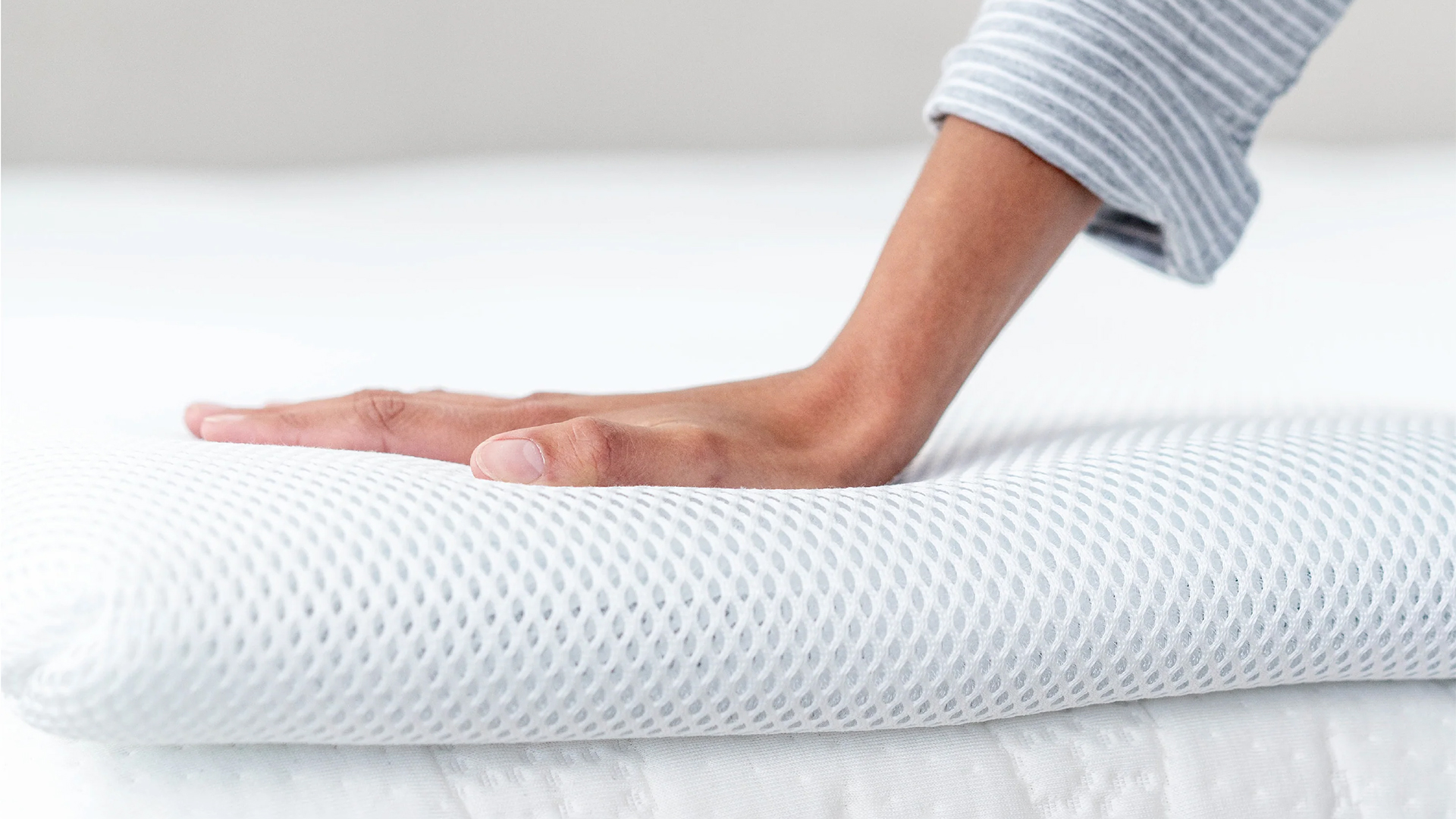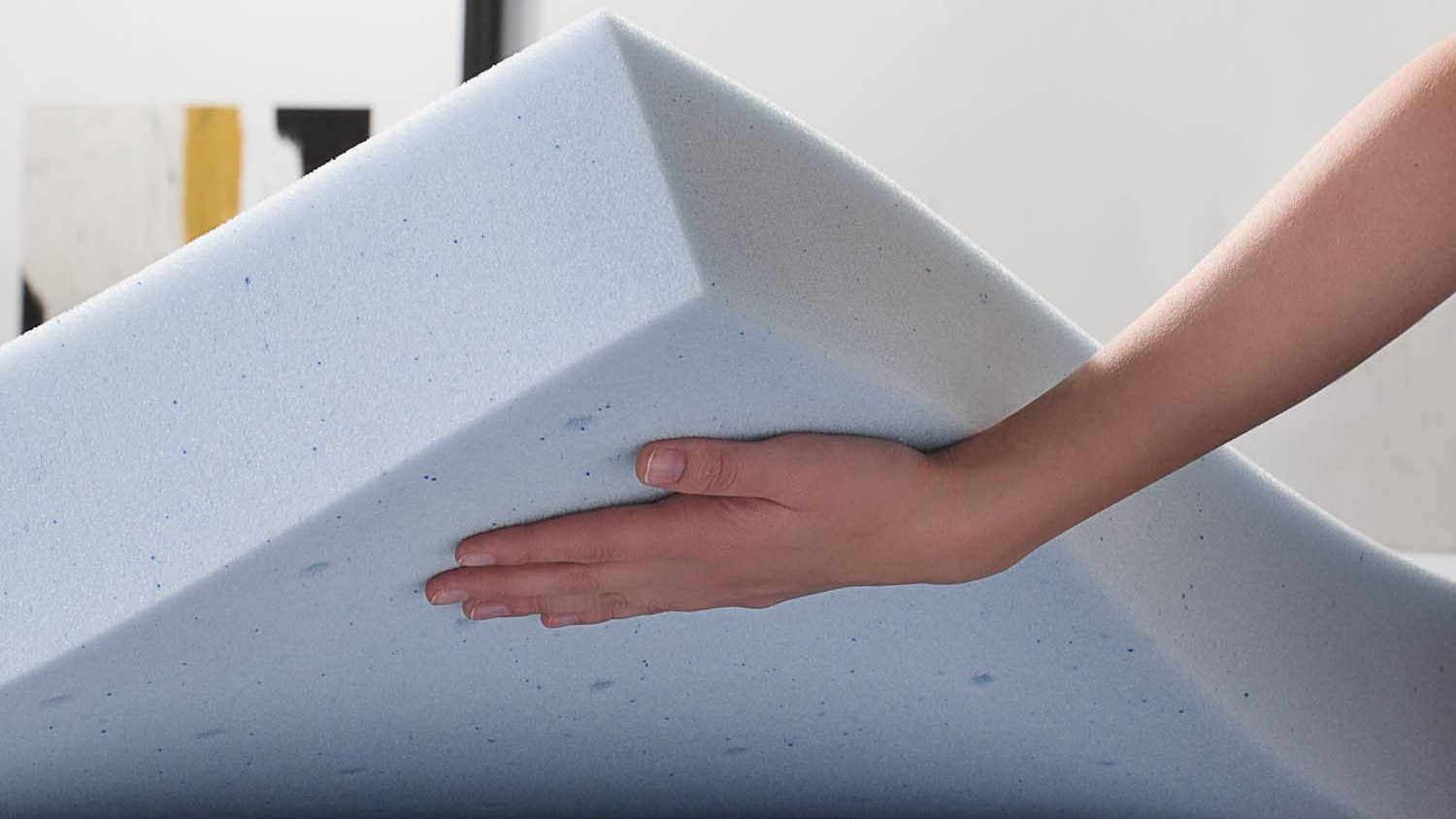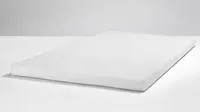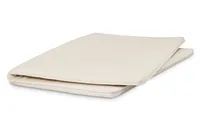I’m a mattress writer — 7 mistakes people make after buying a new mattress topper
Get the best out of your mattress topper by avoiding these common mistakes

As a sleep and mattress writer, I know the difference that a high-quality mattress topper can make to your existing bedroom setup. A decent mattress topper can help if your mattress just doesn't feel quite right. Maybe it’s a little too soft or too firm or doesn’t keep you cool enough at night. A bed topper can make all the difference.
Like 2024’s best mattresses, mattress toppers come in a variety of materials including memory foam, gel and latex. They can vary hugely in thickness, with excellent options ranging from two to eight inches. But if it's sink-in support you're after, look for a mattress topper with a depth of 4" and above.
Regardless of what mattress topper you opt for, it's important that you care for it and use it properly. Based on my research and testing experience, these are the seven common mistakes most people make after buying a mattress topper. Let's take a look.
7 common mattress topper mistakes you're probably making
1. You leave it boxed for too long
Nowadays most toppers, just like mattresses, arrive rolled up in a box. And many of these (particularly toppers made with memory foam or latex) will have been vacuum packed and compressed for easier transport. Like the best mattresses in a box, leaving your mattress topper compressed for too long can lead to problems with the materials, shape and performance. You could find that when you finally put your topper on the bed, it doesn’t expand fully, and you’re left with an uneven and misshapen sleep surface.
Compressed mattress toppers can also be prone to off-gassing and this could be stronger than usual if you leave a topper in its box for too long. In addition, leaving a topper in its box for too long may invalidate any sleep trial or warranty meaning that if you don’t follow the brand’s instructions on how long you can leave a topper boxed, you may not be able to return it for a refund.
2. It didn't fully expand before being slept on
I’ve mentioned that mattress toppers are often compressed to fit them into their boxes. This compression is done with specialist equipment that squashes any excess air out of the topper, allowing them to be rolled and boxed for delivery. So, whilst it’s important to unbox your mattress topper as quickly as possible when it arrives, you’ll also need to be patient while it expands.
If you try to sleep on a topper before it’s fully expanded you certainly won’t get the comfort levels you’re expecting, but you could also run the risk of damaging the topper. The materials need time to fully expand along the length of the topper, including into the corners, before you lie on it.
Get instant access to breaking news, the hottest reviews, great deals and helpful tips.
Of course, a mattress topper won’t take as long to expand as a mattress does, and times will vary according to the brand and type of topper. Check with your brand for exact timings, but it’s worth being aware that memory foam can take a little longer to expand and will suffer the most damage if it’s slept on before it is ready.
3. Your mattress desperately needs replacing

A mattress topper isn’t a miracle worker. Whilst it might smooth out a surface that just has a few small dips and bumps in it, it won’t do anything for a sagging mattress that’s way past its best. Knowing how often to replace your mattress is key to getting a good night’s sleep and one of the key signs is a lump or dent in your mattress that doesn’t go away and isn’t made any better by rotating either.
An uneven mattress is going to cause aches and pains, and even the thickest mattress topper won’t be enough to alleviate this. Any material you choose for a topper will just sink down into the lumps and dips and could even form a larger problem. So, if your mattress is starting to show its age, it’s time to replace it rather than hoping a mattress topper will fix the issues.
4. You’ve purchased the wrong thickness
Mattress toppers come in a huge range of thicknesses, from just an inch or two up to eight inches and more. In many cases, a happy medium of around four inches will be perfect - but that’s not always the case.
A mattress topper that is too thin (anything under two inches) is unlikely to provide any meaningful support or cushioning. The material is too thin, there’s no padding and you are more likely to ‘bottom out’, which means your pressure points won’t be feeling any difference to how they do on the mattress alone.
On the flip side, a mattress topper that’s too thick may see you sinking too deeply into it. This can again mean that you’re not getting enough support from the topper, as you could be too enveloped by the material.
5. You’ve bought the wrong type of topper

There are countless different mattress toppers available, but the three main materials you’ll find in them are memory foam, gel-infused foam and latex.
Memory foam is used in many of the best hybrid and best memory foam mattresses alike. Memory foam provides a distinctive ‘hug’, cradling and cushioning your pressure points and providing a softer surface for you to sleep on. A few of the best memory foam toppers do provide a firmer surface with less sinkage but, in general, memory foam is the obvious choice if you want to soften your mattress.
Gel-infused foam is ideal for those who sleep hot, with the cooling gel helping to regulate and lower body temperature. These are often cool to the touch as well, but don’t be tempted to buy them if you’re more of a reptilian sleeper – those who are always cold at night won’t enjoy a cooling topper.
Latex is extremely durable, breathable and offers a bouncy firmer finish for those looking to firm up a slightly softer mattress. Latex mattress toppers are also an excellent choice for allergy sufferers, as natural latex is hypoallergenic.
6. You’ve bought a mattress pad, not a topper
A mattress pad is a much thinner version of a topper, usually only around an inch thick and designed to add a little plushness to your mattress. They will very slightly alter the feel of your bed, but not to the same extent that a topper would.
Mattress pads come in similar materials to toppers, although you might also find feather and wool pads available. They are usually machine washable and will help to protect your bed against spills and stains but won’t significantly soften or firm up a mattress.
7. You aren’t protecting it properly
Whilst mattress toppers are still significantly cheaper than a new mattress, a decent one can set you back hundreds of dollars. So, it’s important to look after your topper and keep it protected. Not all mattress toppers are machine washable, which means stains, sweat, allergens and dust mites could all build up on them, leading to an unsanitary environment that could even cause health problems.
Fortunately, there’s a simple solution – invest in one of the best mattress protectors to keep your topper fresh and healthy. Mattress protectors go on top of mattresses and mattress toppers with either a skirt, straps or full encasement to keep everything clean. Protectors can then be taken off at regular intervals and bunged in the wash to clean.
It’s important to choose a breathable mattress protector, as cheaper materials can trap heat inside the topper and mattress. I’d recommend investing in protector made from Tencel or bamboo, as these are both exceptional at dissipating heat and keeping the topper and mattress breathable.
Top 3 topper to shop today
Tempur-Pedic Tempur-Adapt Mattress Topper: from $319 at Tempur-Pedic
It’s not cheap so if you’re not in a hurry for a topper, we’d recommend waiting for a Tempur-Pedic sale or major holiday. But we think this is the best memory foam topper around and, in our Tempur-Pedic Tempur-Adapt mattress topper review, found that it offers outstanding pressure relief. It is best suited to side sleepers and those of light to average weight, but heavier and stomach sleepers may find it doesn’t have enough structure.
Lucid Gel Memory Foam Mattress Topper: from $84.06 at Amazon
It might be a budget option, but in our Lucid Gel Memory Foam mattress topper review, we were impressed by how well the topper regulated our body temperature. This is a great choice for those who are prone to sleeping warm, but it is fairly squishy and unlikely to appeal to stomach and back sleepers. Fluctuating Amazon prices and the fact it’s sold by multiple retailers means it’s worth shopping around to get the best price.
Birch Plush Organic Mattress Topper: from $348.80 $279 at Birch Living
This topper is an excellent choice for those looking for the bounce of latex, plus it’s organic and kinder to the environment. The topper has a multi-layer design featuring wool and latex, wrapped up in a quilted cotton cover, giving you plenty of cushioning at your pressure points. Currently there’s 20% off the topper, making this a good time to snap one up.

Jo Plumridge is an experienced mattress reviewer with several years' experience covering all things mattresses and sleep, and who tests memory foam, hybrid and organic mattresses. What Jo doesn't know about a boxed mattress isn't worth knowing, so naturally we tasked her with producing a series of features for Tom's Guide looking at all aspects of mattresses, from how to pick between latex and memory foam (it's a tricky one), to the seven mistakes people make when buying a mattress for the first time. When testing the DreamCloud Luxury Hybrid for Tom's Guide, Jo said: "I loved the back support and pressure relief it offered. Plus, it looks far more expensive than it is." When she isn’t writing about sleep, Jo also writes extensively on interior design, home products and photography.



